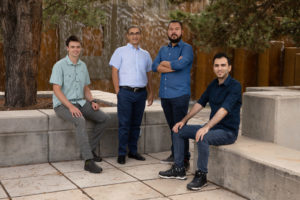 While being one of the oldest ways of generating electric power, hydropower units are still one of the most important sources of electricity around the world and the Western U.S. Hydropower units provide flexibility, reliability and resilience to the electric power grid while also being among the cleanest options.
While being one of the oldest ways of generating electric power, hydropower units are still one of the most important sources of electricity around the world and the Western U.S. Hydropower units provide flexibility, reliability and resilience to the electric power grid while also being among the cleanest options.
But it’s not just about having them available but also knowing when to use them to provide the most efficient method of generating electricity. A team of electrical and computer engineering researchers at the University of Utah, including associate professor Masood Parvania and graduate students Majid Majidi, Alex Farley, and Luis F. Rodríguez-Garcia, have just received the grand prize in a U.S. Department of Energy competition for their cloud-based software package that can intelligently manage when it is best for hydropower units to generate electricity. A hydropower unit is a system that turns the flow of water into electrical energy by spinning a turbine. Hydropower units are the components in dams that generate electricity.
In receiving the Hydropower Operations Optimization (H2Os) Prize in the competition’s first phase, the U team’s HydroFlex technology was named among the best cutting-edge solutions for hydropower development. The three-stage H2Os Prize challenges researchers to upgrade hydropower technology using 21st Century solutions. Competitors are applying modeling, data analytics, and machine learning to create new ways for hydropower systems to plan daily grid operations and meet water management needs, such as water supply, environmental flow requirements, and flood management.
In generating electricity, it is necessary to combine the available energy resources — coal and gas plants, solar and wind farms, and hydropower, among others — to meet customers’ demands. HydroFlex, which operates on a cloud-computing server, calculates the amount of electricity a hydropower unit should generate to reduce the operation of traditional power plants, especially when electricity consumption is higher, such as at night. The purpose is to maximize generating electricity from cleaner hydropower units, which leads to reduced emissions.
“The HydroFlex technology would enhance the flexibility and maximize the utilization of hydropower plants that not only would directly increase the share of this clean power source in the energy portfolio but also support the integration of additional intermittent renewable energy such as wind and solar in the power grid,” said Parvania (pictured, second from left).
Hydropower is a clean, renewable, and flexible source of energy. Because solar and wind generation can vary based on environmental and weather conditions, having a controllable renewable energy like hydropower ensures a greater amount of renewable energy is on the grid while improving resiliency and mitigating the impacts of blackouts, said Farley (pictured, far left).
“Integrating hydropower and other renewable energies reduces the share of power generation from fuel-based technologies leading to reduced carbon emissions,” he said. “Overall, hydropower plays an important role in making meaningful climate action.”